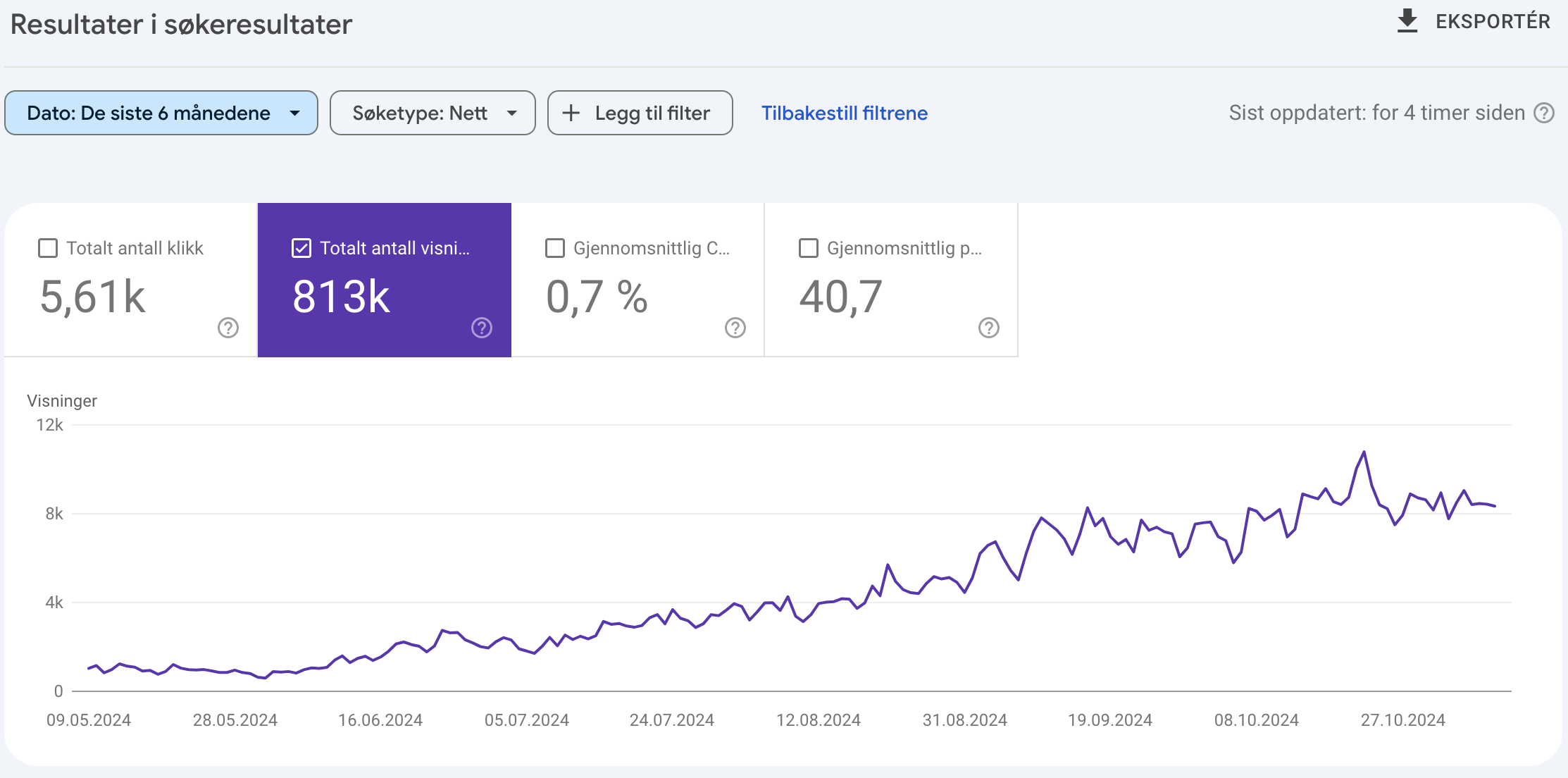Around 2010, blogs had their golden age. At that time, everyone with a website needed a blog, preferably with the latest articles at the top of the homepage. This was meant to engage users and keep them returning time and again. Each website was to be like a mini online newspaper. A phenomenal idea with the best intentions—what could possibly go wrong?
Initially, blogging started enthusiastically, with many compelling posts. Then, perhaps the time between each post grew longer until many stopped posting altogether. Many blog-based homepages ended up with several-year-old articles, leaving a poor web editor feeling guilty about what should have been followed up.
Eventually, the blog feed was replaced with simple feeds from Facebook, Instagram, or Twitter/X—where it was so easy to post. Little did they know that they no longer owned or controlled their posts, nor did it have any positive effect on visibility in search engines.
I work daily with some of Norway’s most famous brands. Behind these brands are companies that spend millions annually on marketing, much of which goes to Google and Facebook in the form of advertisements. On Google, you can somewhat pay your way up the search results, but it's costly.
If you have a small business with a more modest marketing budget, appearing visible might seem nearly unachievable.
Google Search Console
I am working on a side project called Itefy, a web-based app that makes it easy for businesses to manage equipment and assets. As a side project, it doesn’t generate much revenue, and blowing a lot of money on ads isn’t realistic.
I have maintained a blog on the website, mostly to write about new functionalities. Aside from serving as an information channel, the blog hasn’t attracted much organic traffic from search engines, according to Google Search Console—a free tool that shows you your visibility on Google.
That said, one blog post stood out positively. Part of the reason was likely that I offered a spreadsheet template for equipment registration for free. This hit a nerve with many people searching for something that wasn’t widely available elsewhere—a perfect, albeit rare, combination.
This article also differed from other articles as it was largely timeless. While a product update became less relevant over time, this article remained relevant for many years to come.
Hire a skilled copywriter
In the spring of 2024, I migrated the website Itefy.com to Craft CMS.
One of the reasons was that I wanted the site to be as easy as possible to update. Not just for myself, but also for other editors. This opened up the possibility of hiring blog writers to craft new blog articles.
Craft CMS also made it simple to tailor access for one or more external persons, allowing them to only make changes in the blog section, and restricting access to writing new or editing their own blog articles. In the summer of 2024, I found a freelance blog writer, who on average posts 2 to 3 articles every week.
What are the results so far?
In 6 months, we have seen a tenfold increase in the number of times Itefy appears in Google search results, from about 800 views per day to an average of 8000 views per day, with a steadily rising curve. The number of clicks is increasing at the same pace, and there is also an increase in the number of registrations on the website each week. However, the average click-through rate and average ranking in search results are somewhat lagging. But this is expected, as new content usually takes some time to 'mature' in the search engines.

Create timeless relevance
Our blog articles are timeless, informative articles that are relevant to our target audience.
It doesn’t matter if your site gets a lot of traffic if the visitors have no interest in what you’re selling. It's therefore crucial to ensure that the topics discussed are connected to and have relevance for your potential customer base.
Choose the right TOOL
At the same time, it's important to use the right tools. Craft CMS was a natural choice for me because the platform not only makes it easy to maintain a blog but also offers great flexibility in building and maintaining a professional website without technological limitations. The tool is easy to use and adaptable for any need.
Editor's note: Remember that a "blog" doesn’t necessarily have to be called a "blog." Our own blog for Hallingcast is named BOUNCE (or SPENST in our native language), for Kantefølflak (our Chips brand) we’ve used "Fjelltid" (relevant to the emotions we're communicating) and for one of our clients, Hallingdal Flistermindal, we’ve named the blog "Flisespikkeriet" (relevant to their product).
Imagine you’re sitting on a third-floor balcony with a megaphone wanting to talk about something very relevant to passersby on the street below. Would they look up if it were just another "balcony"?







